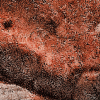kiwisphere
Member
- Messages
- 6
- Likes
- 0
Hello!
I am new here
I hope I post it in the right branch, was pending btw. general and plug-ins.
I experience some strong artefacts that seem to come out after Imagenomics Noisewear application.
The photograph is challenging, so I am not wondering that it does not work that well, but I hope there is a way to get rid of the artefacts.
Initial condition:
ISO-1600 shot with Nikon D800
1. processed the picture in RawTherapee: exposure compensation +3.6 (I doubt that these are real 3.6, since 0 is darker than the out of cam jpg exposure), lightness +36 and some curves.
2. Imagenomic Noisewear in PS, does a good job, but artefacts remain. (default settings, luminance 70, color 80)
3. Topaz filter. that enhances of course also the artefacts.
Attached some shots.
Now, I understand that a ISO-1600 picutre with all that processing (exp. comp., topaz filter) will look messy. However, it seems the artefacts consist ONLY of black and white pixels (look at the 400x). Hence, I think there is a way to get rid of them.
And, yes, these artefacts are STRONGLY visible even at 20%, esp. because they are all over the picture.
Any ideas?
thanks a lot!
screenshots at 100x:
out of cam jpg:

out fo cam with topaz:

, RAW+3.6 exp. comp.:

, RAW+3.6 after noisewear:

, RAW+3.6 after noisewear and topaz (final picture):

and here in 400x:
RAW+3.6 exp. comp.:

RAW+3.6 after noisewear:

RAW+3.6 after noisewear and topaz (final picture):

I am new here
I hope I post it in the right branch, was pending btw. general and plug-ins.
I experience some strong artefacts that seem to come out after Imagenomics Noisewear application.
The photograph is challenging, so I am not wondering that it does not work that well, but I hope there is a way to get rid of the artefacts.
Initial condition:
ISO-1600 shot with Nikon D800
1. processed the picture in RawTherapee: exposure compensation +3.6 (I doubt that these are real 3.6, since 0 is darker than the out of cam jpg exposure), lightness +36 and some curves.
2. Imagenomic Noisewear in PS, does a good job, but artefacts remain. (default settings, luminance 70, color 80)
3. Topaz filter. that enhances of course also the artefacts.
Attached some shots.
Now, I understand that a ISO-1600 picutre with all that processing (exp. comp., topaz filter) will look messy. However, it seems the artefacts consist ONLY of black and white pixels (look at the 400x). Hence, I think there is a way to get rid of them.
And, yes, these artefacts are STRONGLY visible even at 20%, esp. because they are all over the picture.
Any ideas?
thanks a lot!
screenshots at 100x:
out of cam jpg:

out fo cam with topaz:

, RAW+3.6 exp. comp.:

, RAW+3.6 after noisewear:

, RAW+3.6 after noisewear and topaz (final picture):

and here in 400x:
RAW+3.6 exp. comp.:

RAW+3.6 after noisewear:

RAW+3.6 after noisewear and topaz (final picture):




